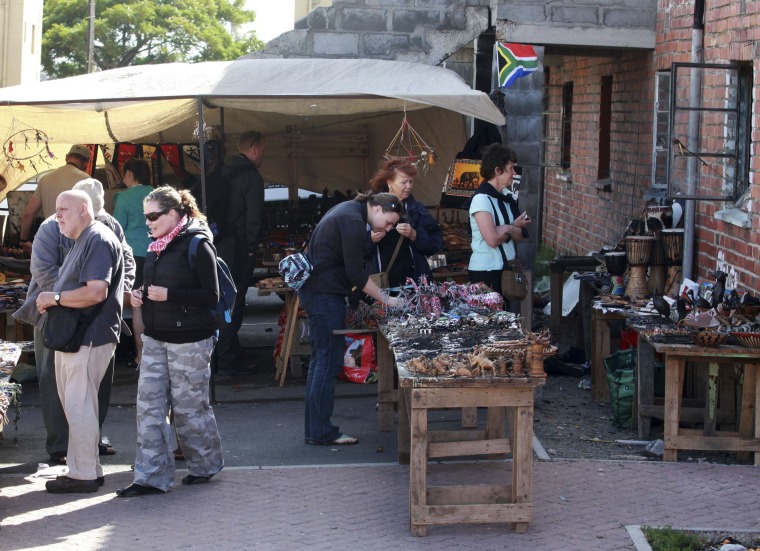The other side of Cape Town

The Cape Town area is famous for beaches, wine tours and Table Mountain, among other attractions. But on a recent morning, a group of tourists set out to experience something most visitors never see — the townships where black and mixed-race South Africans were warehoused under apartheid.
"We want to show them the other side of Cape Town with this township tour," said Samantha Mtinini from Camissa Travel & Marketing. The tours take visitors to homes, schools and markets in three townships where they meet children, vendors and other residents.
The tour does not sugarcoat reality: Mtinini says the townships remain impoverished and beset by crime. But the company advertises the tours as a way to create jobs, as well as a way for visitors to experience the humanity and culture of the people who live there.
The tours might also make an interesting side trip for soccer fans heading to South Africa for the World Cup, which kicks off June 11.
First of three stops on the tour was Langa, a black township where the visitors were greeted by preschool kids singing a welcome in Xhosa and English.
Langa is an area of shacks, schools, religious, sports and recreational and cultural buildings. Traditional healers also do business here, claiming to be able to cure just about everything, and to clear evil spirits from homes and create luck for relationships and business.
"We are born with spirits from ancestors," Major Ndaba of the Langa Herbal Chemist shop told the tourists. "People come to me for all sorts of problems like business success and evil spirits."
Just outside in the Joe Slovo shack settlement, Christopher Wanyoike awaited customers at his arts and crafts stall.
"My crafts are from all over Africa, from Kenya, Malawi, Zimbabwe, Tanzania among others," he said. He is among an army of Langa entrepreneurs, from fruit and vegetable hawkers, to cooks barbecuing meat al fresco to be served with umqombothi, frothy traditional African beer for about $2 (14 rand) a liter.
Next the tour moved to Bonteheuwel. The sprawling colored, or mixed-race, township was established after the forced removals in 1966 from an area known as District Six. District Six was a pocket of Cape Town where South Africans of different races lived together until the city council forced those who were not white to move far from their jobs and the economic hive of the city center.
Under apartheid, South Africans of mixed-race were more privileged than blacks, part of a divide-and-rule strategy to create tensions that linger to this day. Bonteheuwel, compared to Langa, boasted more sports fields and better schools with libraries and business centers.
Then it was on to Guguletu, another black township. There, tourists saw new shacks built after apartheid ended in 1994, during an influx of settlers from rural to urban areas.
Mtinini said that wherever space is available, people build shacks, including just in front of the Gugulethu Seven monument, which commemorates seven anti-apartheid activists killed by the security police in 1987.
Nearby, another monument commemorates Amy Biehl, an American Fulbright scholar killed in 1993 in Guguletu. Biehl, 26, who was white, was studying how women were contributing to change in South Africa. Her black assailants claimed the attack was part of the war on white rule.
Biehl's attackers were granted amnesty after confessing before South Africa's Truth and Reconciliation Commission, set up to help the country cope with the legacy of apartheid.
Two of her attackers now work for a charity the Biehl family founded that has provided training in arts, sports and other areas to young South Africans.
NBC News

No comments:
Post a Comment